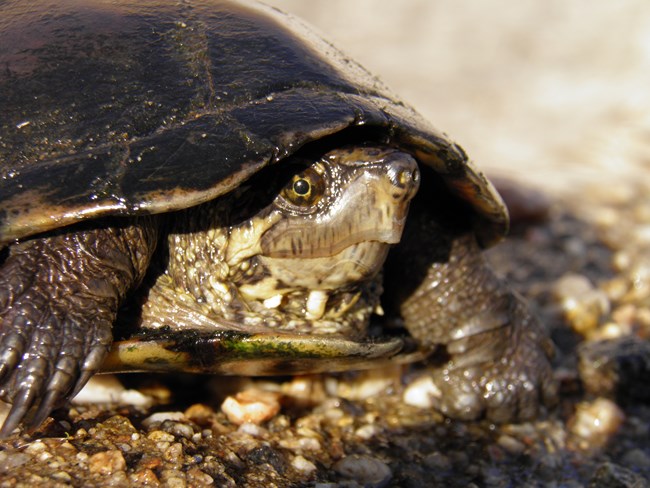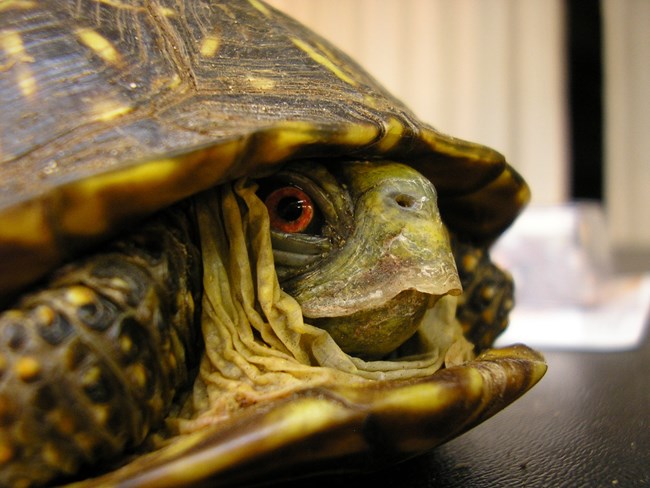
NPS Photo Sonoran Mud Turtle (Kinosternon sonoriense)This aquatic turtle can be found in and around springs, creeks, or other water sources. Its shell is yellowish-brown, and it is often covered with algae. It has fleshy bumps located under its chin. 
NPS Photo Ornate Box Turtle (Terrapene ornate)This scientific name translates to mean small, ornate turtle. Both the carapace (upper shell) and plastron (lower shell) are brown with radiating yellow lines, and the make has reddish spots on its front legs. It lives in desert grasslands in shallow burrows to avoid extreme ttemperatures. It has a hinged plastron, allowing it to seal off its head and front legs when a predator comes near. 
NPS Photo / T. Wiewel Sonoran Desert Tortoise (Gopherus agassizii)The desert tortoise is a long-lived, slow growing tortoise and is estimated to live from 50 to possibly 100 years! They are common, yet often unseen at Saguaro National Park. The majority of their long lives is spent in burrows where they escape the cold winter temperatures and extreme summer heat. Desert tortoises are well adapted to arid conditions and conserve water in several ways. They have thick skin to prevent water loss, and they excrete dry uric acid instead of urine. Also, tortoises can store water in their large urinary bladders. This stored water can be used in self defense if necessary. It is apparantly distasteful to predators, and when frightened, the tortoise may suddenly empty its bladder. However, this defense can be costly in times of drought, and the tortoise could die of dehydration if it can not replace the fluids. |
Last updated: October 26, 2024
